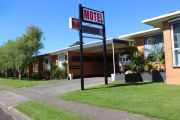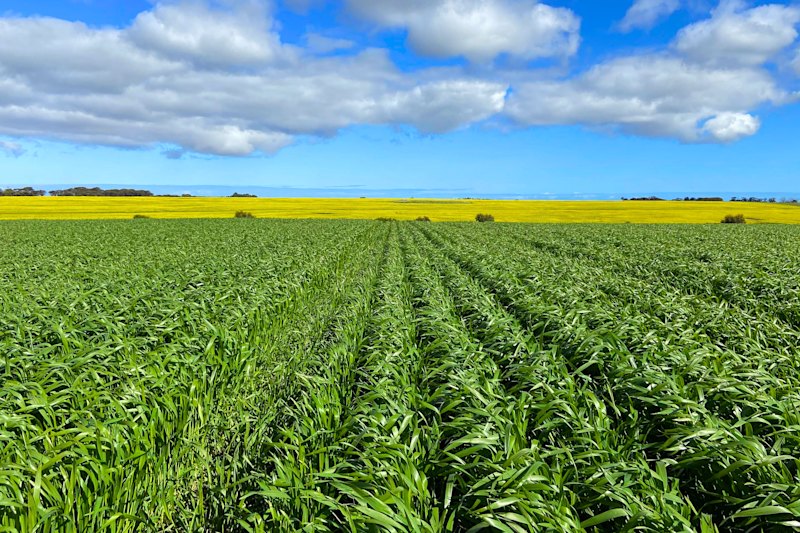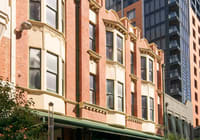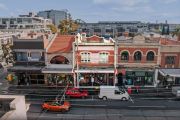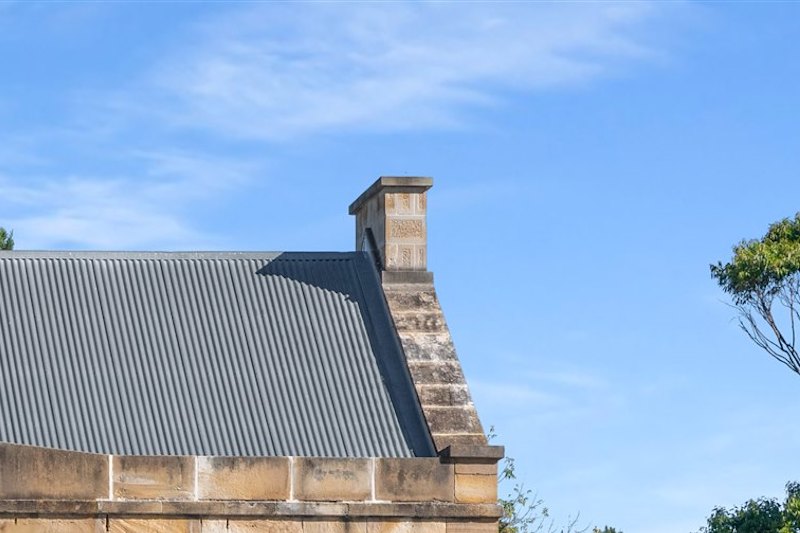
Six underground spaces used in everyday life
The surface of the Earth is a nice place to be, most of the time. But every now and then we find a reason to dig beneath it.
Sometimes it’s because of the climate, to banish unsavoury activities, or just because there’s no more room up top.
Here are some underground spaces that people have made good use of.
1. Church, Coober Pedy
Much of the South Australian town of Coober Pedy operates underground. As well as hotels, houses and a bookshop, there is a beautiful Serbian Church.
The complex includes a 30-metre-long place of worship as well as a community hall, priests’ residence and parish school, all dug into the sandstone. At its deepest it is 17 metres below ground.
 Underground Serbian Church at Coober Pedy. Photo: Sheriden Rhodes
Underground Serbian Church at Coober Pedy. Photo: Sheriden Rhodes
2. Shopping mall, Toronto
Many cities have underground shops connected by tunnels and walkways. The area around Sydney’s Town Hall station features three kilometres of tunnels. But that pales in comparison with Toronto’s PATH – a 30-kilometre network that, according to the Guinness World Records, is the biggest of its kind in the world.
 One of the pedestrian walkways in the PATH, Toronto. Photo: Go Toronto Tourism
One of the pedestrian walkways in the PATH, Toronto. Photo: Go Toronto Tourism
It spans 371,600 square metres, has 1200 shops along its route and links 50 buildings in the city. It’s also the ideal way to get around during Toronto’s freezing winters and occasionally hot summers.
3. Office, Milsons Point
Just across the bridge from the Sydney CBD is this bat-cave-like-space underneath eight storeys of underground car parking. It was put up for sale last year and agent Nick Moloney, of Raine and Horne Commercial, said the property’s buyers plan to convert the space into state-of-the-art offices.
When the building was completed 13 years ago the owner bought the space – along with several residential apartments on the floors above – and used it as a giant storage area.
 Artist’s impression of what the vacant basement space could be transformed into. Photo: Raine and Horne Commercial
Artist’s impression of what the vacant basement space could be transformed into. Photo: Raine and Horne Commercial
 Blank canvas: Lot 148/30 Glen Street in its current state. Photo: Raine and Horne Commercial
Blank canvas: Lot 148/30 Glen Street in its current state. Photo: Raine and Horne Commercial
4. Business park, Kanas City
Bigger is always better in the US, and in Kansas a massive business park/storage facility has been built out of a disused mine.
The complex – known as SubTropolis – accommodates 52 businesses and more than 1600 workers, and claims to be the world’s largest underground business complex.
 SubTropolis claims to be the world’s largest underground business complex. Photo: Wikipedia
SubTropolis claims to be the world’s largest underground business complex. Photo: Wikipedia
The process of converting the mine began in the 1960s – and is one of several such complexes in the US.
Subtropolis was an active limestone mine in the 1940s, but as mining started to decline, it left a vast network of empty caves.
The business park has been gradually expanding and now covers half a million square metres.
Notable tenants have included the US Postal Service, which reportedly used the facility to store its stamps, as well as Ford, which has used it for vehicle storage. The underground climate is also ideal for storing foodstuffs such as coffee beans.
5. Farm, Clapham
Hidden beneath the Northern train line in this disused WWII bunker is a fully-fledged 1-hectare farm, providing micro greens and salad leaves to London’s restaurants and wholesalers.
Established in 2015, Growing Underground aims to provide a low emissions alternative to transporting produce into the city – by producing them 33 metres underneath it instead.
Crops are grown in a sealed environment with specially designed ventilation, advanced lighting and a sophisticated irrigation system, all of which is low on energy use.
6. Public toilets, Melbourne
There were originally 11 underground public toilets built in Melbourne in the early 20th century, the city’s response to demand for loos that were sanitary and discreet – as street-level toilets were regarded as indecent at the time.
Now there remain four in use, including one near the Town Hall and another near the corner of Elizabeth and Bourke streets.
 Collins Street underground toilets in Melbourne in 2016. Photo: Simon Schluter
Collins Street underground toilets in Melbourne in 2016. Photo: Simon Schluter

